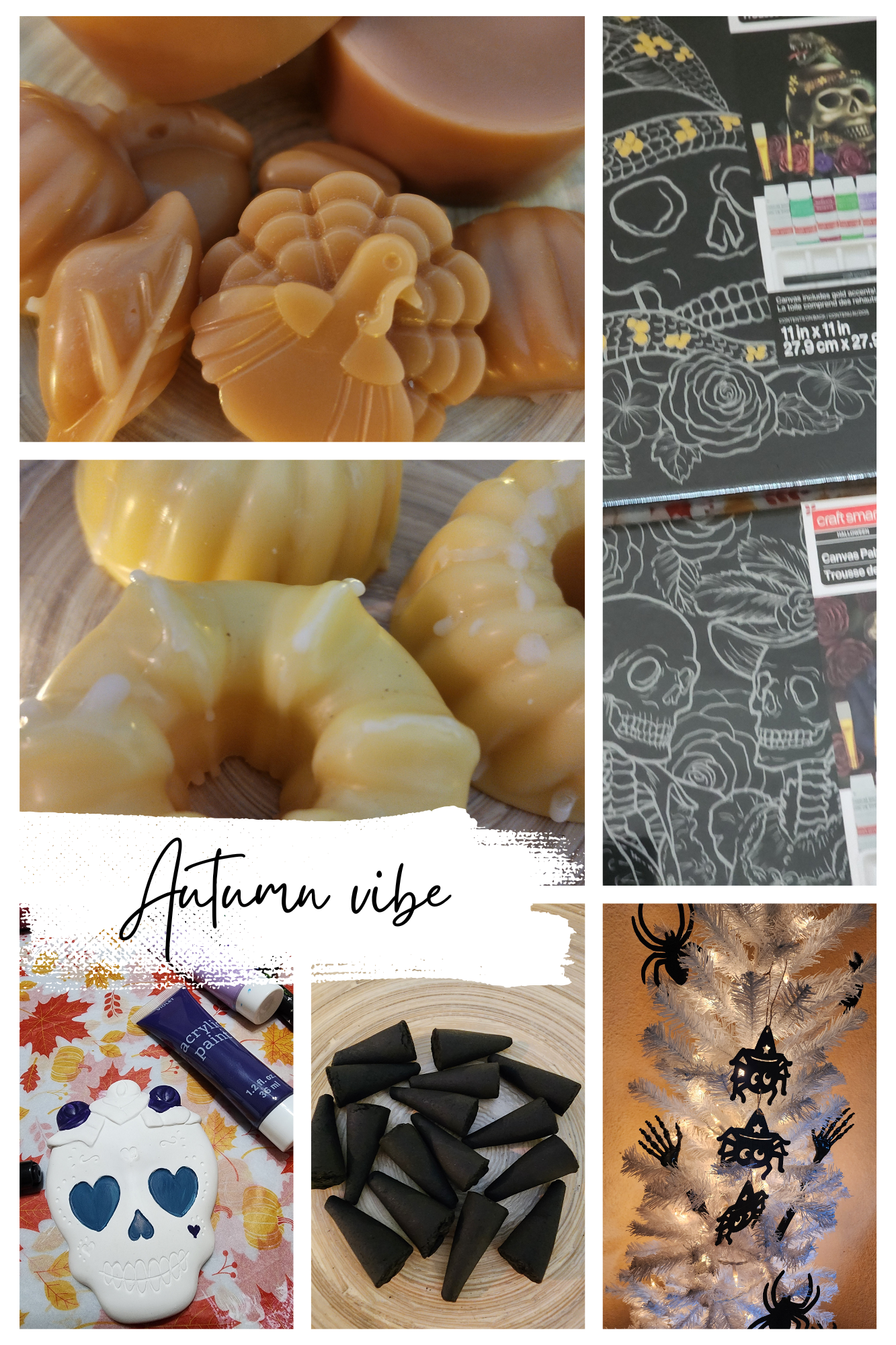
Kicking Off the Weekend
This weekend felt like one of those rare ones where we actually balanced fun with productivity. Our incense and wax shipment got delayed, so Santiago decided he wanted to switch it up and make a car freshie. Y’all, it’s been a long time since we’ve done one, but once you get in that craft mode, it all comes back quick.
Craft Store Temptations
On Saturday, we made the brave decision to hit up both Michael’s and Hobby Lobby for their big sales. I don’t know about you, but walking into those stores this time of year is dangerous. Every aisle screams “take me home,” and well… I might’ve grabbed a little bit of everything—Halloween, Fall, Thanksgiving, and Christmas. Basically, my cart looked like the seasonal aisle exploded.
We also picked up some emergency wax because nothing gets in the way of seasonal holiday melts around here. Priorities, right?
Creative Chaos
Saturday night turned into a full-blown craft-a-thon. We had a quick little paint date (yes, covered in paint before dinner is a whole vibe), then we were pouring wax until the wee hours of the morning. No regrets—except maybe when the alarm clock went off and we realized we slept in until 9.
Sunday Reset Mode
Even with a late start, we didn’t waste the day. Santi took care of the dogs while I tackled the bedding (ours and the dogs), and we got the pool winterized and covered for the season. That always feels like the official “goodbye summer” moment, doesn’t it?
Not Your Typical Sunday Dinner
Usually, Sundays mean a big home-cooked meal, but today I kept it simple—nachos for dinner and a strawberry cake for dessert. Let’s be real, that cake isn’t doing me any favors in the “getting back to homeostasis” department, but it sure tasted good.
Wrapping It Up
Now the evening’s winding down with the race and some football. Honestly, it feels like the perfect way to close out a weekend that had a little bit of everything—crafting, shopping, chores, and a whole lot of fun.
Lisa Crow contributed to this article. She is a true crime junkie and lifestyle blogger based in Waco, Texas. Lisa is the Head of Content at Gigi’s Ramblings and Southern Bred True Crime Junkie. She spends her free time traveling when she can and making memories with her large family which consists of six children and fifteen grandchildren.









